Goodnight sweet Prince: Pinarello replaces venerable models with more affordable F and X Series road bikes
Italian brand simplifies its mid-range line-up with new race bike and endurance bike platforms while the Dogma remains top dog

Luke Friend
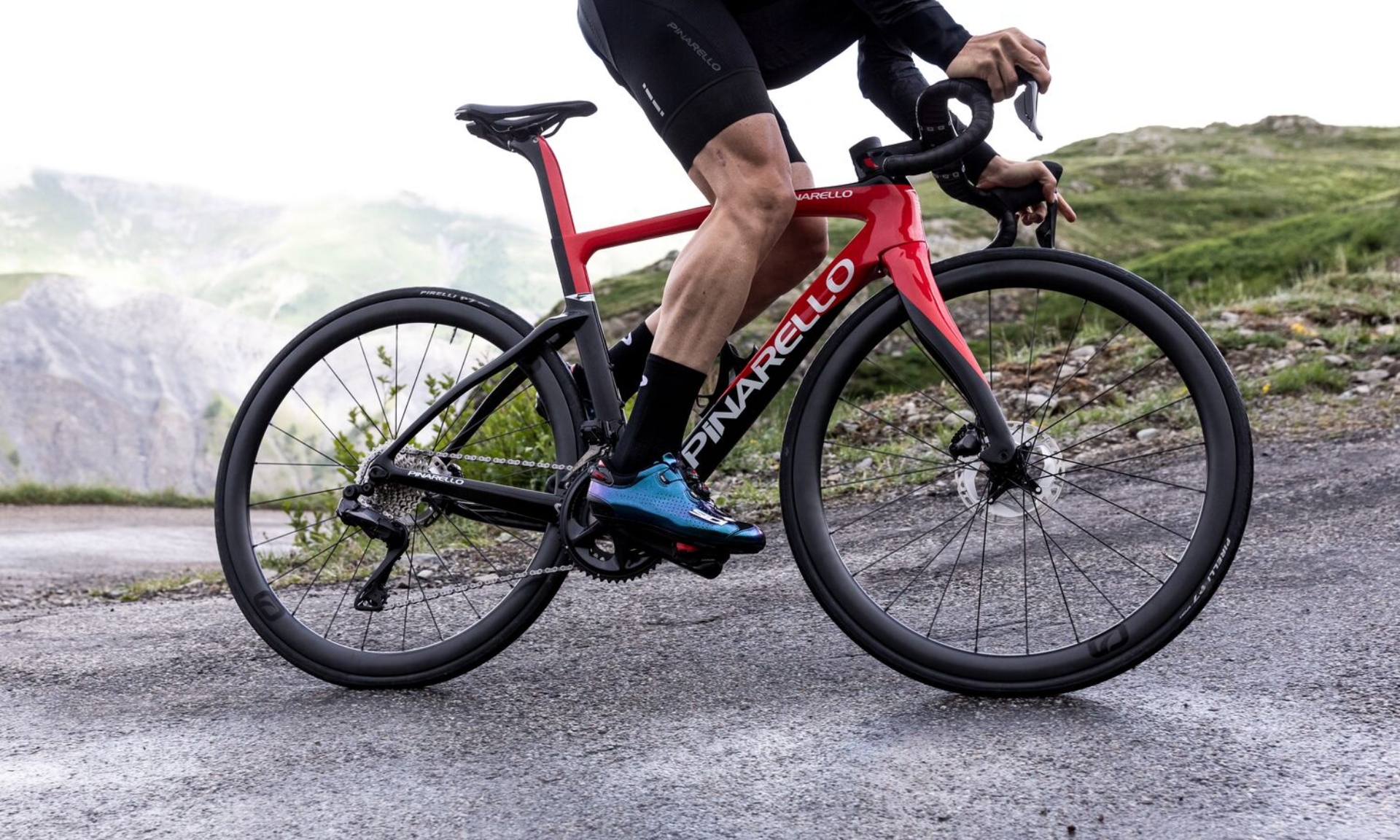
Pinarello has launched a new range of road bikes, the F-Series and the X-Series.
To make room, it's removed much of what had in its mid-range bracket and replaced it with the two new lines to target a more affordable price point.
So while the Dogma F remains at the top of the tree, both the Prince and Paris have now gone. Instead, Pinarello has opted for a simplified line up and one which appears to have more consistency throughout the range.
We got the chance to ride one of the new F models and you can read our thoughts further down the page. But first, a few details about the bikes.
Pinarello F-series
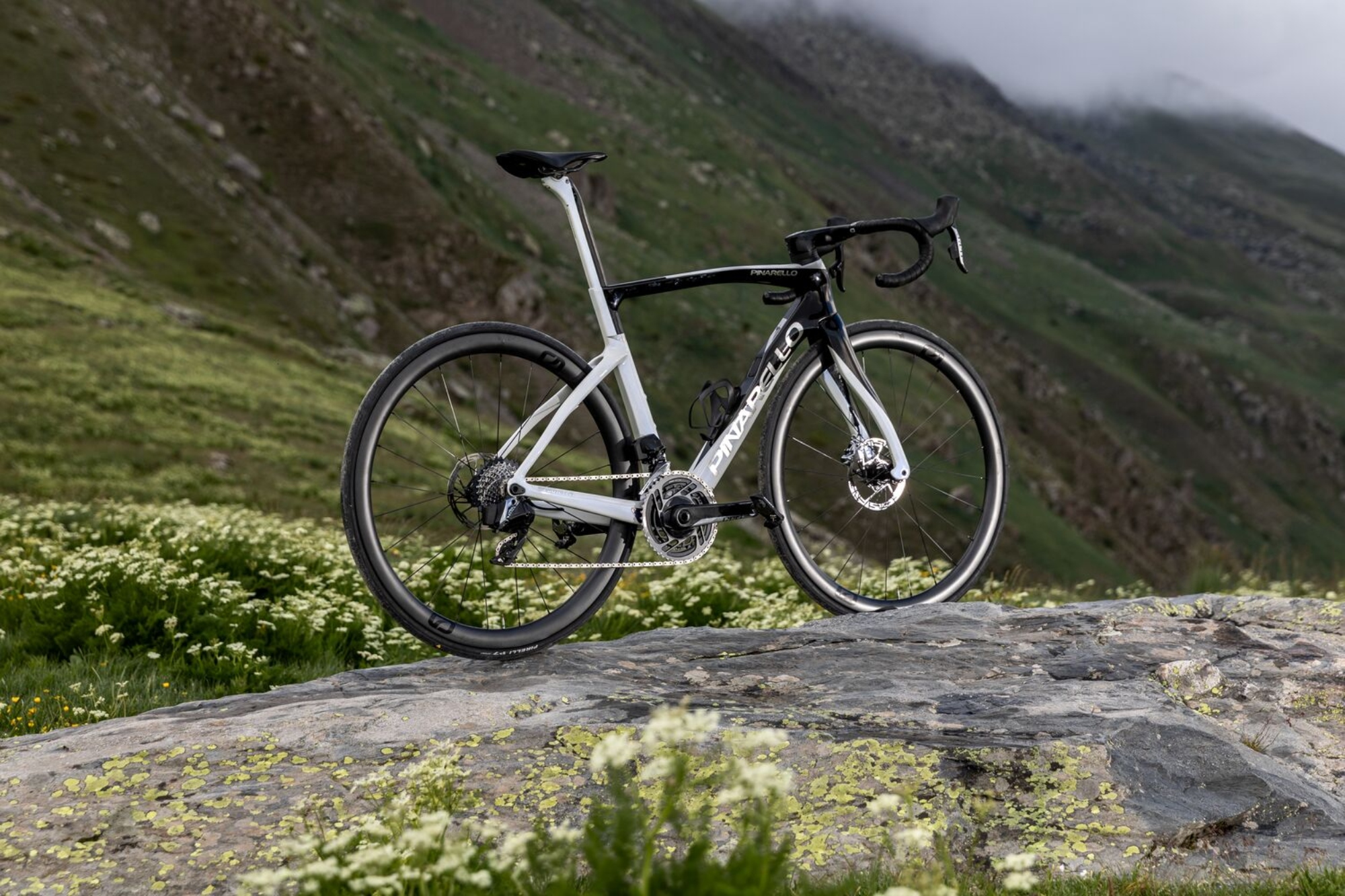
The F-Series comprises three models and essentially takes the place of the Prince in Pinarello’s road bike line-up.
It’s a range that’s designed to mimic the same ride characteristics as the top end Dogma F but with a friendlier price tag attached. Pinarello says that the F-Series geometry is “based closely” on the Dogma F, with the bike being offered in nine sizes rather than Dogma F’s 11.
The series launches with the F5, F7 and F9. As you might guess, the numbering in the series is used to differentiate between the models, so, the higher the number, the higher the spec. However, you’ll not find a number painted on the frame because, as we all know, parts can be upgraded so you could buy an F7 now, but upgrade the parts later on to end up with an F9.
The latest race content, interviews, features, reviews and expert buying guides, direct to your inbox!

Pinarello F-series frame
Fans of Pinarello’s curvy lines and asymmetrical chainstays - which have been kept short to aid responsiveness but still allow tyres up to 30mm in width - will be happy to see them both here. Indeed, asymmetry has also been applied to the seat stays and the head tube; the former, Pinarello says, is to provide a better balance given the drive chain forces on the bike’s right and the disc brake on the left, while the latter “progresses from an aerodynamic shape to allow more lateral room on the right-side for cabling to pass through the frame”.
Other notable design elements include a new integrated seatpost clamp that Pinarello says both saves weight and improves aerodynamics. In fact, like all Pinarello road bikes, the F was designed in the wind tunnel using “advanced CFD systems”. The result is a thinner top tube, an aero seat post and tapered seat tube and a recessed downtube to cover the bottle - an area that typically generates a lot of drag.

The position of the electronic groupset battery has also been chosen with aerodynamics in mind. Located in the bottom bracket shell, Pinarello says it allowed for a reduction in the thickness in the seatpost, which impacts the frame’s aerodynamic performance, as well as lowering its centre of gravity.
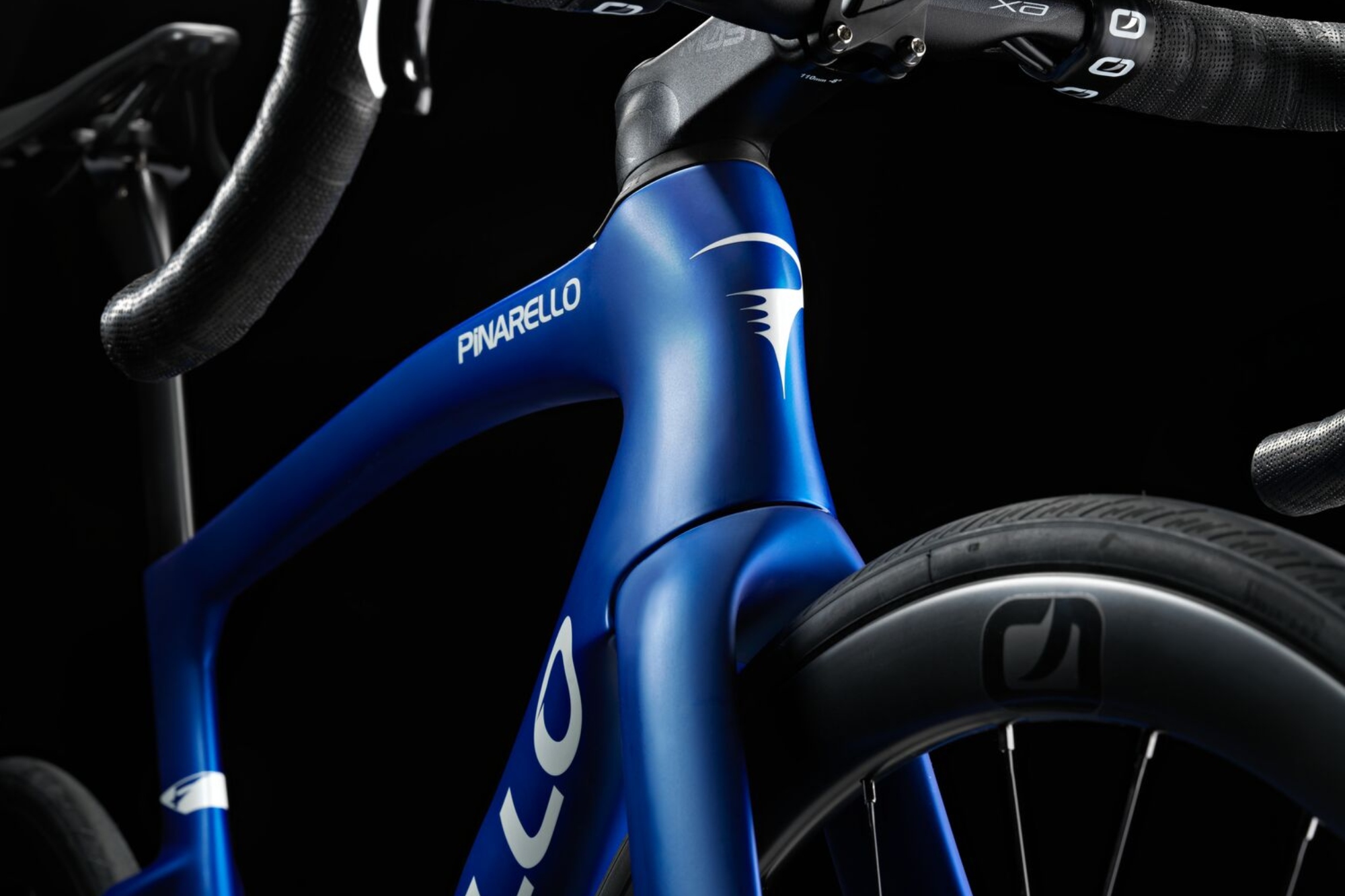
While the frame design remains consistent across the range, the carbon layup does not. The F7 and F9 will use the same Toray T900 carbon fibre while the F5 will use a lower grade T700 carbon fibre, which is 40g heavier in an unpainted 53 size frame - 990g compared to 950g. To put this into context, the Dogma F uses T1100 Toray carbon fibre, so when you line all the models up next to each other you can start to see the natural progression of carbon fibre used throughout the range.
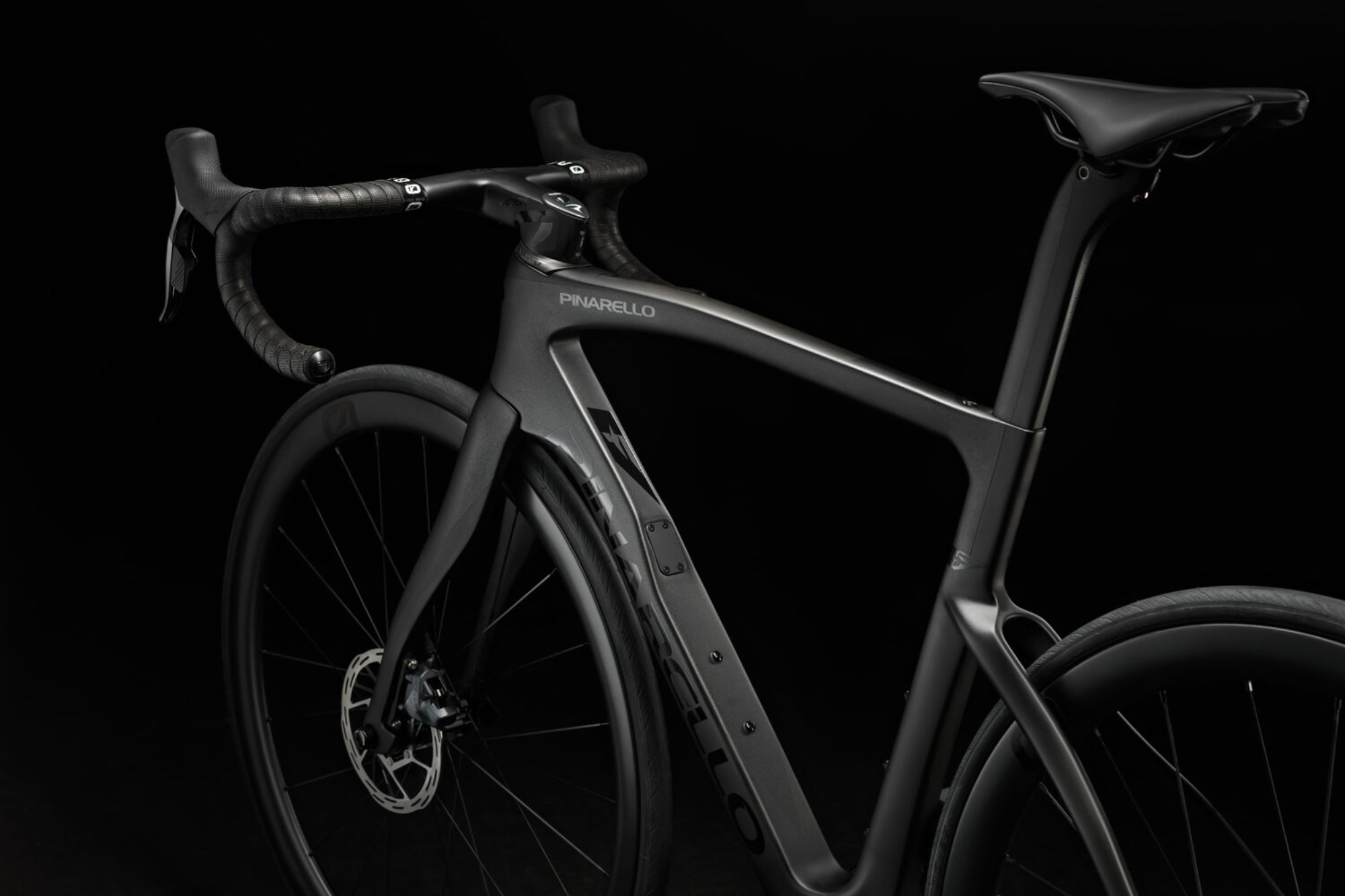
Pinarello F-series specifications
In terms of groupset offerings, the F5 is offered with both Shimano 105 Di2 and mechanical Ultegra. Step up a rung to the F7 and the choice is electronic only, with Ultegra Di2 and SRAM Force eTAp AXS available. At the top of the ladder sits the F9, and this is offered with both Shimano’s and SRAM’s top-tier groupset, Dura-Ace Di2 and RED eTap AXS.
The F-Series will initially be limited to four models in the USA. Pricing for the F9 with Shimano Dura-Ace Di2 is to be confirmed but the F7 with Ultegra Di2 will retail at $8,800 while the F5 with Shimano 105 Di2 will cost $6,950 fitted with Most wheels, and $6,000 with Fulcrum Racing wheels.
In the UK only the F7 and F5 models will be available. The F7 is offered with an Ultegra Di2 groupset and either Most or Fulcrum wheels and will cost £7,000 and £6,500 respectively. The F5 comes equipped with Shimano 105 Di2 and Fulcrum Racing hoops and retails at £5,250.
Pinarello X-Series
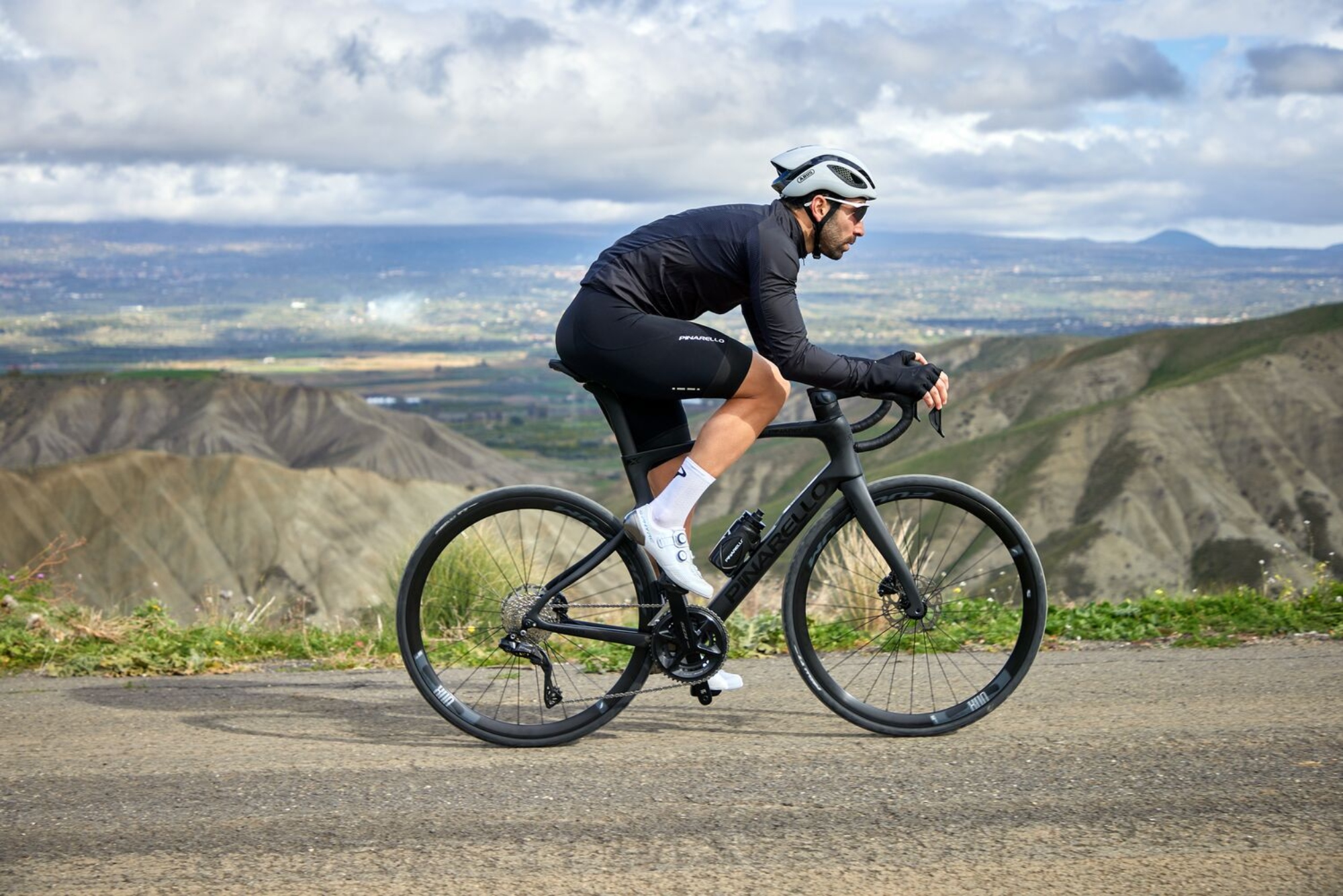
Pinarello describes the X as a bicycle for “riders who ride for pure pleasure, but who still need the thrill of powerful acceleration and adrenaline-fuelled descents”. Looking at the makeup of the X it’s an expressive way of saying it’s an endurance road bike that will take the place of the Paris.
In terms of the line-up the X-Series launches initially with two models, the X1 and the X3.

Pinarello X-series frame
Like any endurance focussed road bike, comfort is a key consideration of the X-Series. Pinarello says that the frame geometry is designed to deliver a “relaxed position in the saddle”. A quick look at the numbers shows that the X has a significantly higher stack and shorter reach than the F to help achieve this. On frames with a seat tube measuring 545mm (centre to centre) the X has a stack of 588.2mm and a reach of 376.7mm. Compare this to the 570.3mm and 390.8mm of the F and the difference in position is clear.
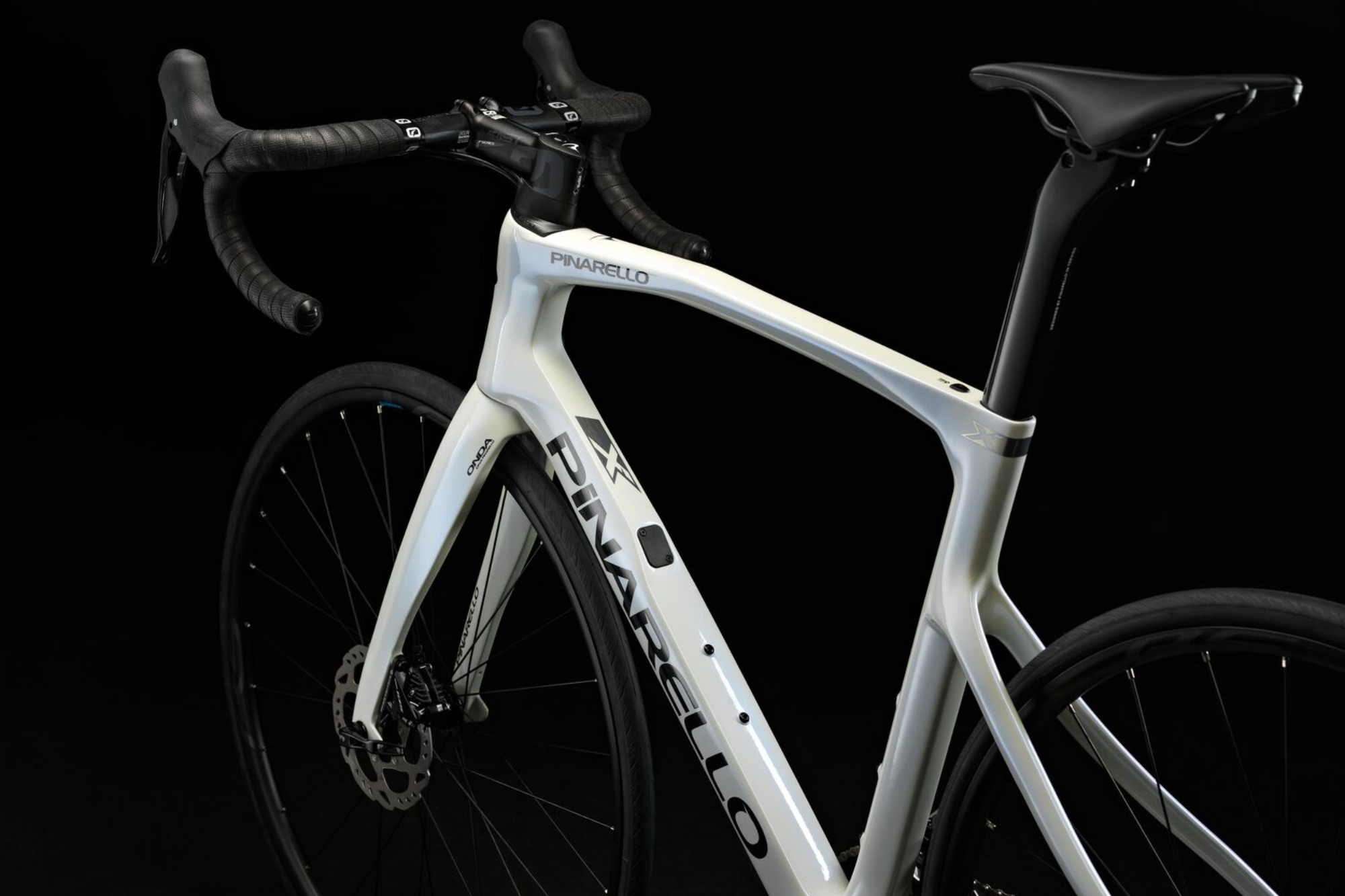
A comfortable ride is also a result of matching design with material choice, and Pinarello has opted to use Toray’s T600 carbon lay up, which it says helps to “absorb vibrations even on the roughest roads”. It teams up with a new rear triangle design that features curved seat stays that too are designed to dampen vibrations resulting in less strain on the rider’s body, especially over the longer distances the X is aimed at. Tyre clearance is a claimed 32mm, which should aid both comfort and versatility, although Pinarello says the X-Series is very much for the tarmac.

Endurance bikes aren’t only about a smooth ride however, and Pinarello have equipped the X with some of the same aerodynamic enhancements that are headline news for the racier F-Series. There’s externally routed cables throughout, an aero seat post and tapered seat tube and an aerodynamically optimised head tube.
Pinarello X-series specifications
The X1 and X3 are both offered with Shimano mechanical 105 and 105 Di2. The X3 will also be available in a SRAM Rival AXS build too.
As for the wheelsets, the X1 comes fitted with Shimano RS-171 hoops, while the X3 uses the same Fulcrum Racing 800s used on some of the F-Series bikes.
In the UK the X3 is the only model available in this initial release, with the 105 Di2 spec'd edition retailing at £4,500.
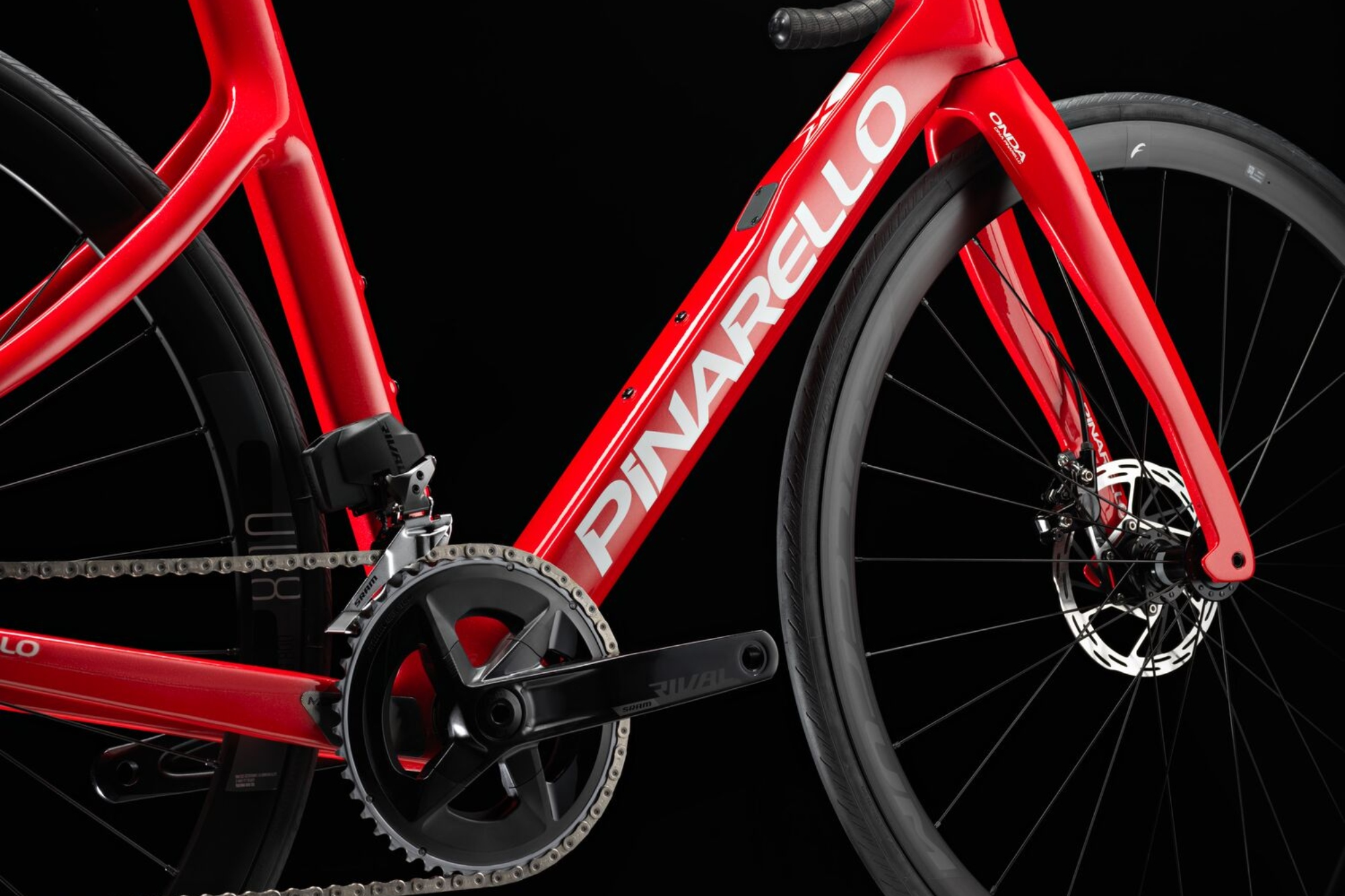
When you look at the specs offered here, you can start to see a pattern emerge. We wouldn’t be surprised to see more options offered in the X-Series, maybe an X5 and X7 and X9 which match the F-Series in terms of spec offering and an increase in the grade of carbon fibre used.
And likewise, it’s not inconceivable to imagine more affordable options added to the F-Series. So think F1 and F3.
First ride review - Pinarello F7 Ultegra Di2
The purpose and delineation of the F and X-Series is clear, but, what are they like to ride?
At a recent Iaunch event we were able to spend a bit of time on an F7, and well, there were some good things and some not so good things.
First up, we’ll start with the good stuff. The bike looks the part. There’s no question where this bike has come from and where it has drawn its inspiration - Pinarello’s flagship race bike, the Dogma F. The clean colourways generally look smart across the range and should stand the test of time.
The F-Series really does replicate the same position as the Dogma, although I did have about 30mm of spacers under my handlebars and it would have been nice to ride it slammed to increase the aggressiveness of the ride, it still provided a similar ride experience.
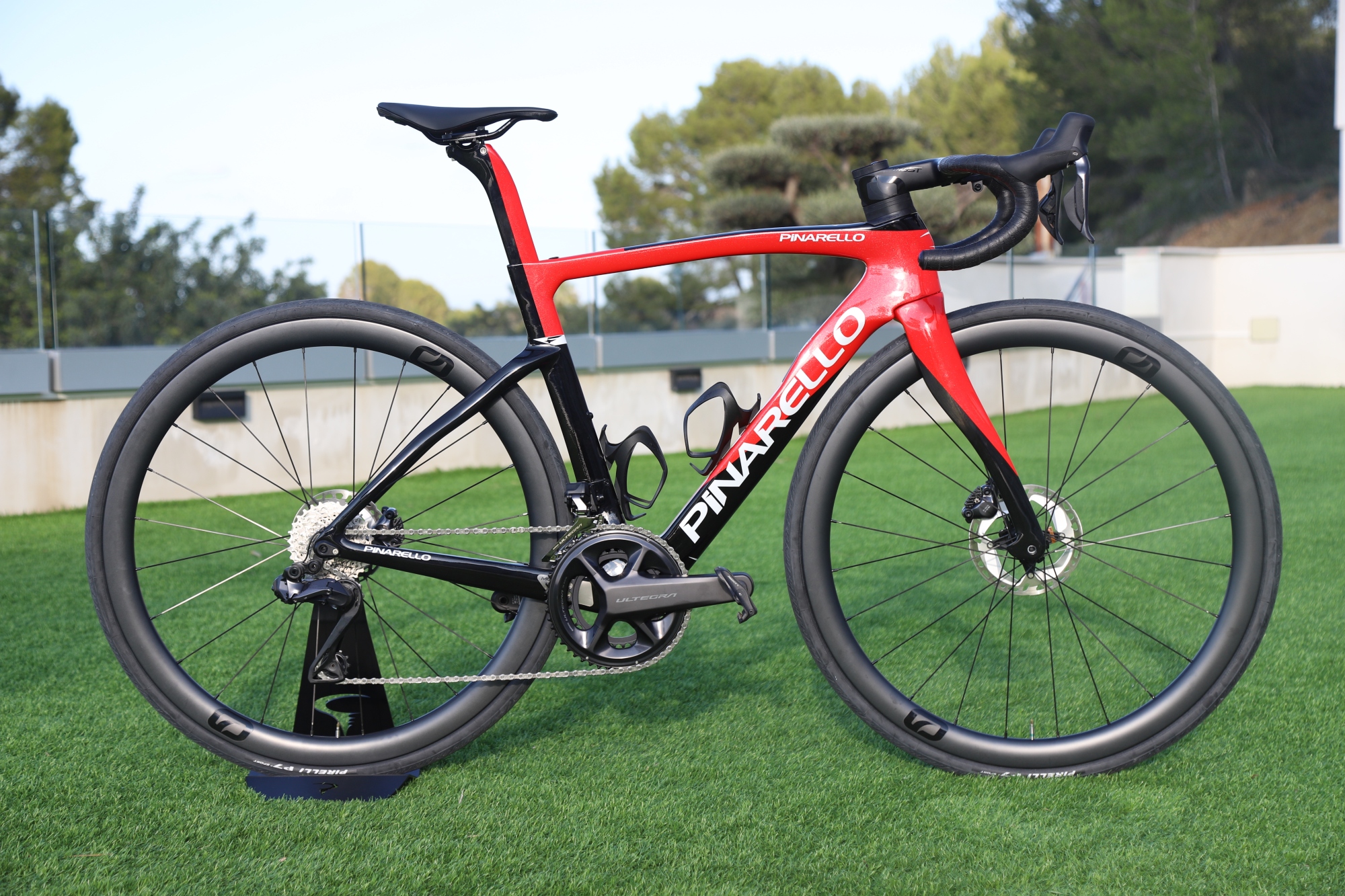
The bike came alive when at speed, it felt balanced and beckoned me to lean it into corners with minimal worry. It was responsive on the climbs and no matter where you pointed it, it was no slouch.
However, onto what I believe to be the downsides of this bike, and this goes for both F7 and F9. It really is let down by the wheel and tyre choice. The Most carbon wheels that are fitted really are just rebadged wheels from Vision and they sit in the mid range of the wheel market. They numb the ride and feel harsh. When you pair that to the Pirelli P7 tyres the losses go even further.
It’s a real shame that Pinarello didn’t fit a pair of Pirelli P Zeros. I did question them about this and they said that they didn’t fit P Zeros because that’s what comes on the Dogma. To me, this doesn’t really stack up. The F-Series is designed to sit below the Dogma, but that doesn’t mean that you can’t fit top tier tyres, especially when you consider how much this bike will cost. Really, Pinarello is just forcing the user to replace the tyres right from the get go. New tyres really would help this bike and even though the wheels aren’t great, it would be a step in the right direction.

Something else that I’m not the biggest fan of is that as the bike sizes get bigger, the frames start to look a little weird. To my eye at least the smaller frame sizes definitely look much better, and luckily, since I ride a pretty small frame it works out well but for some of my taller colleagues, the shapes do start to look a little unwieldy.
Lastly, as I mentioned earlier, the bike excels when going fast. It’s a real joy to pilot on descents, climbs and open flat sections, however, when riding around town and at more sociable paces, it doesn’t feel quite as special. It feels rather normal and a bit ‘samey’ to everything else - perhaps this is too harsh and the same argument can be made for most road bikes - but when you experience both personalities of the F series, the difference in the riding experience is rather large. If anything, it just makes me want to chase the ride feel you get from going fast. I would put this slightly boring ride feel at low speeds down to the wheels. If one were to run something with a wider internal width which properly supported the side walls of the tyres, and had a lighter rim weight, spinning up to speed would be fun and grip around town would be improved. It would make the bike come alive.
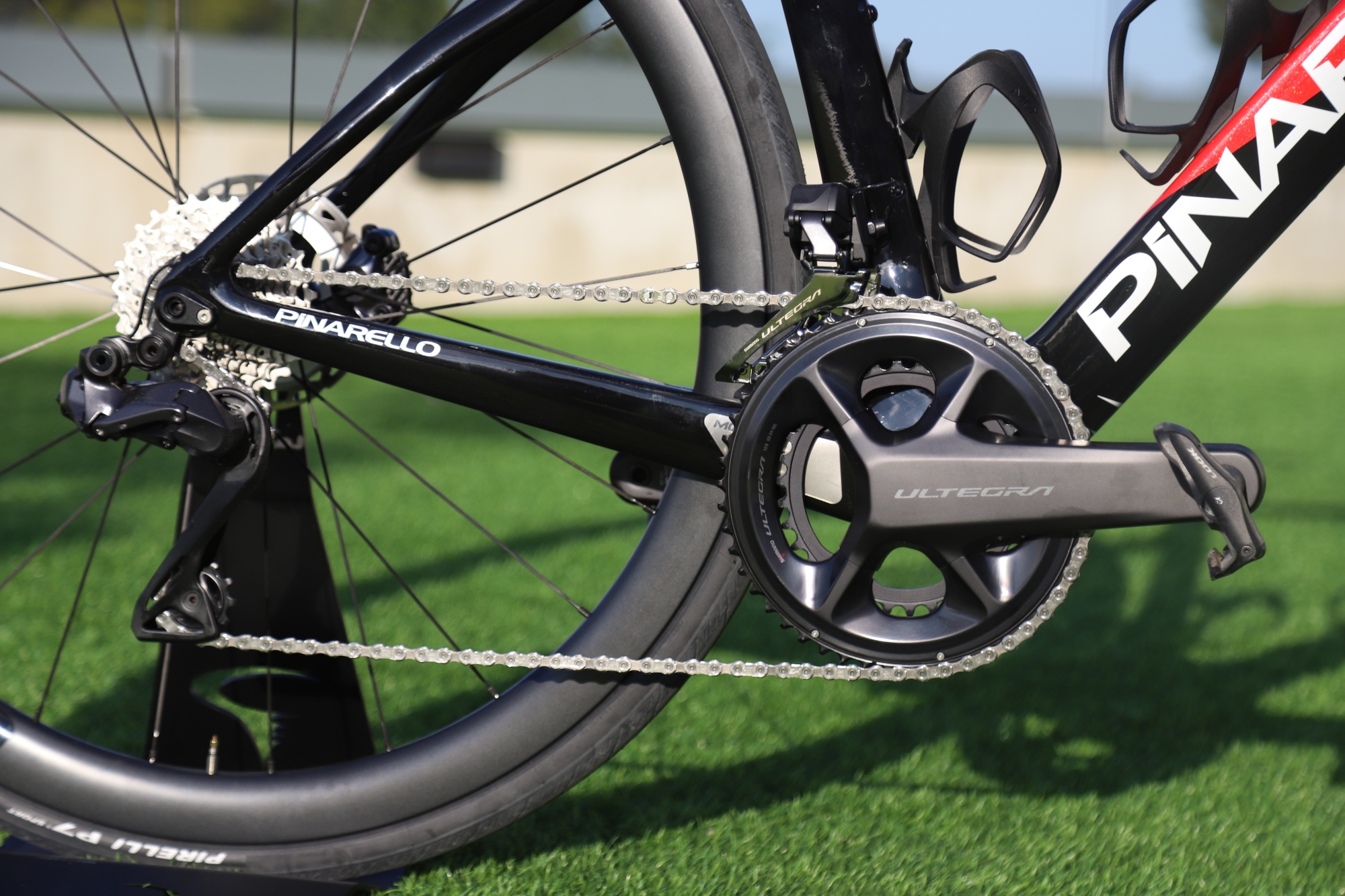
The F7 however is the model that makes most sense to me. I believe that anyone wanting the Dura-Ace gruppo found on the F9 would probably just take the step to buy the full blown Dogma, not to mention that in the UK the F9 won’t be available at launch, with no comment from Pinarello on when it would be landing.
It’s Ultegra groupset matches the second tier nature of the F-Series. The models that sit below the F7 provide more value and allow more people to get onto the F-Series platform but you may still feel compelled to upgrade the wheels and tires. The F7 which comes with the Fulcrum Racing 500 wheels at £6500 would be my pick. Yes, you can spend another £500 to move up to the Most carbon wheels, but I’d recommend using that many to upgrade the stock wheels and either moving the Fulcrums on or just saving them as a spare set of wheels for winter riding.
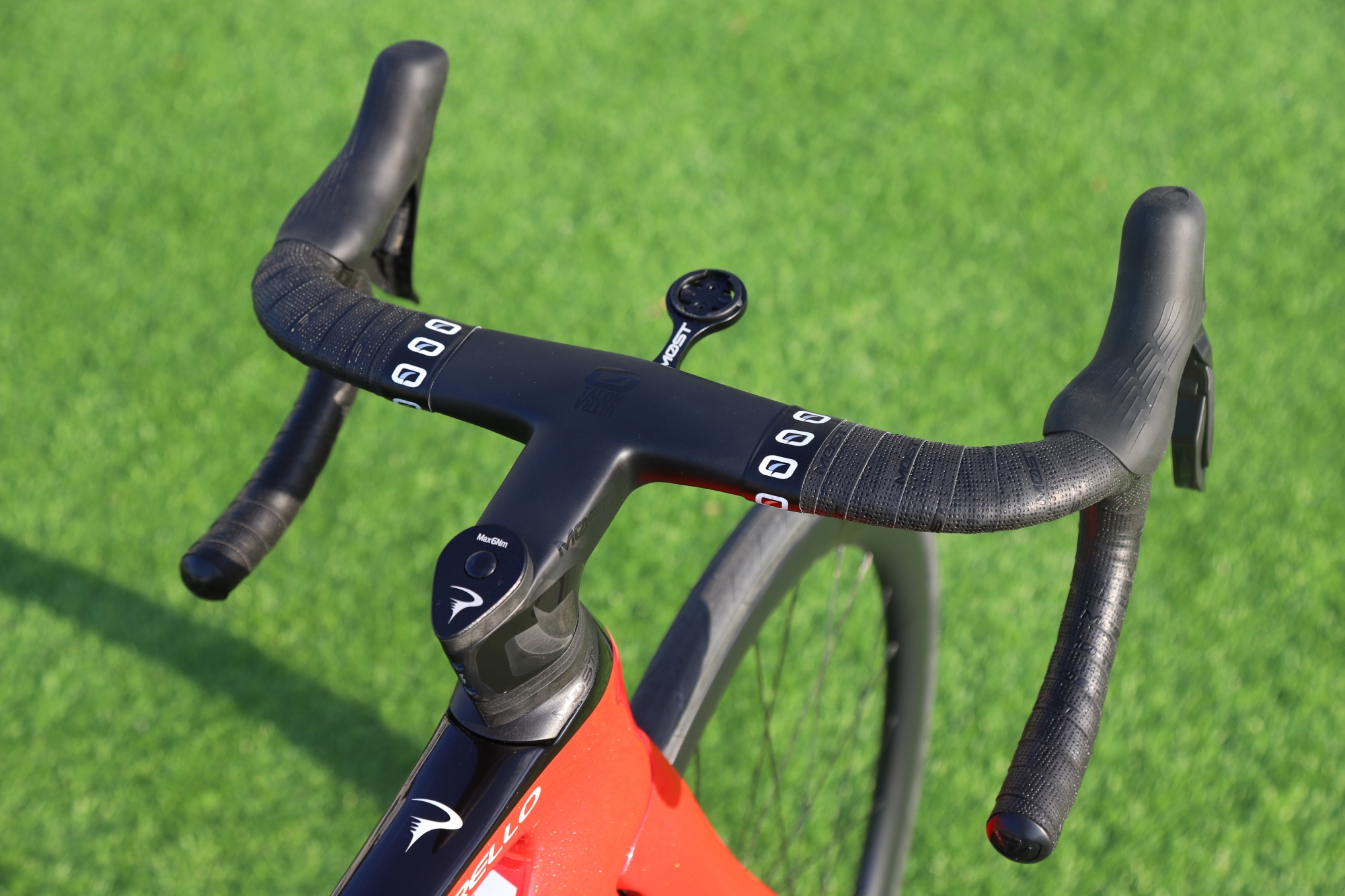
When I start to think about other models that sit in this space, there’s one bike that jumps out at me - the Canyon Ultimate CF SLX 8 Di2. Sure, it was the last bike I had in for testing but since its price point matches the F7 in my recommended spec at £6500, there are some easy comparisons to make. You’ll enjoy full Ultegra groupsets and the brands' own integrated carbon bars on both. However, the Canyon builds in a 4iiii crank based power meter and has fitted some pretty decent DT Swiss 14000 ARC wheels which I really enjoyed riding, not to mention the range topping Schwalbe Pro One tyres.
Both bikes' bigger brothers are used on the WorldTour and have the same racing instinct but from initial rides, the Canyon felt more exciting, more of the time. It’s worth noting that Canyon is able to build in so much value when you consider their direct to consumer business model, so in fairness to Pinarello there is one more bike I’d compare the F7 to.
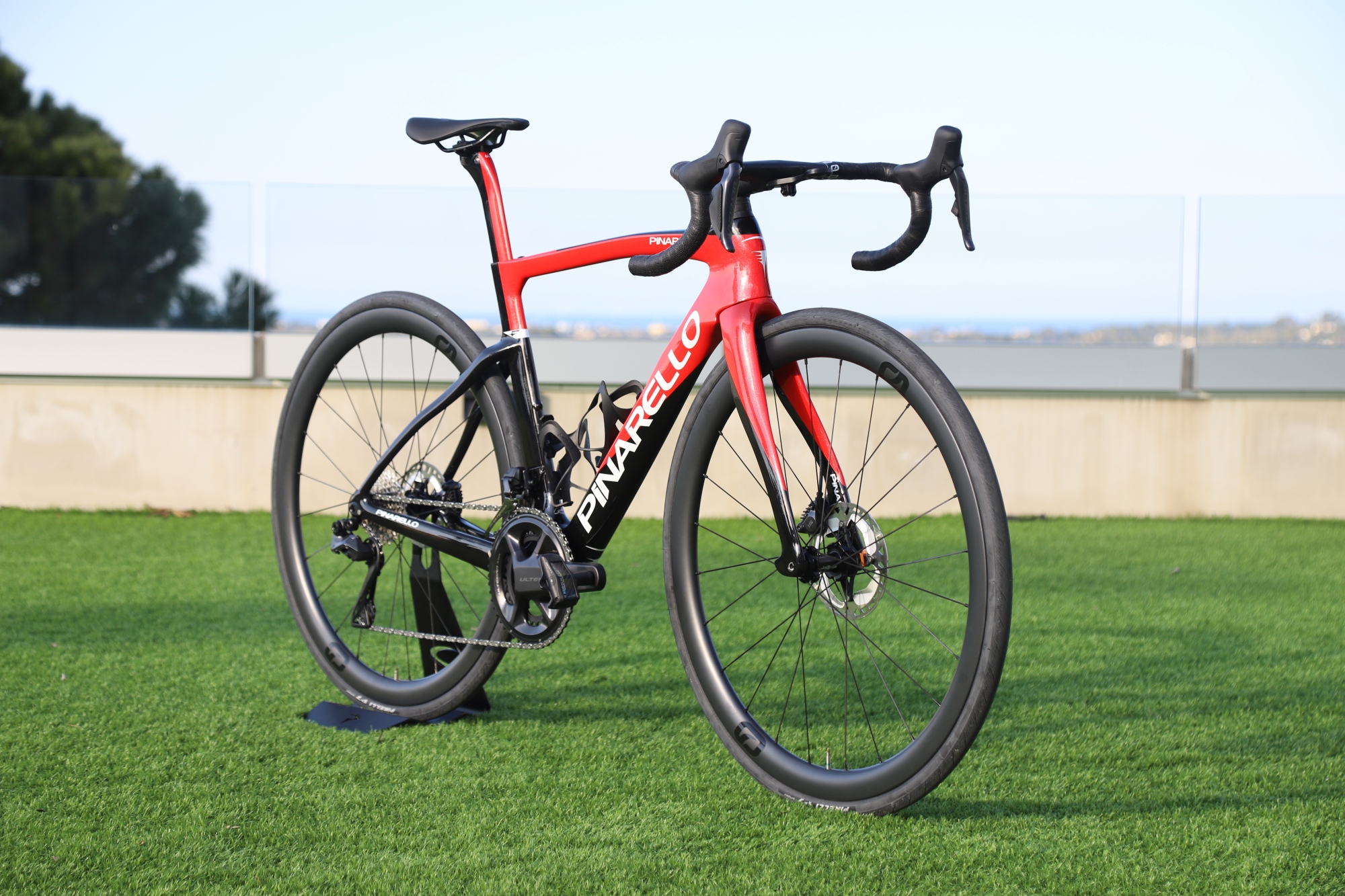
The F7 priced at £7000 which comes with the Most carbon wheels lines up very nicely against the Specialized Tarmac Expert. Again, both sit as second tier bikes as the Tarmac is one behind the range topping S-Works. Both come with full Ultegra groupsets, the Tarmac also makes use of in-house brand Roval Rapide carbon wheels. However, the Tarmac also costs £250 more, but arguably, the wheels are better and are worth paying for.
Perhaps there’s something to be said for owning a Pinarello. It still sits as something of a slightly niche option compared to the industry giants and carries a cachet to match. However, given their proven track record of building grand tour winning bikes, they know what riders need to be able to perform. The ability to buy into that brand and culture at a more affordable price point, well, I’m sure Pinarello will have queues out the door.
At the moment, we’ve only ridden the F-series but the X-series will be coming in for test soon. Given that the X has roughly taken the Dogma geometry but has reduced reach by around 13mm and increased stack by over 30mm, it should make for a fairly relaxed riding experience but the effects of those changes remains to be seen.
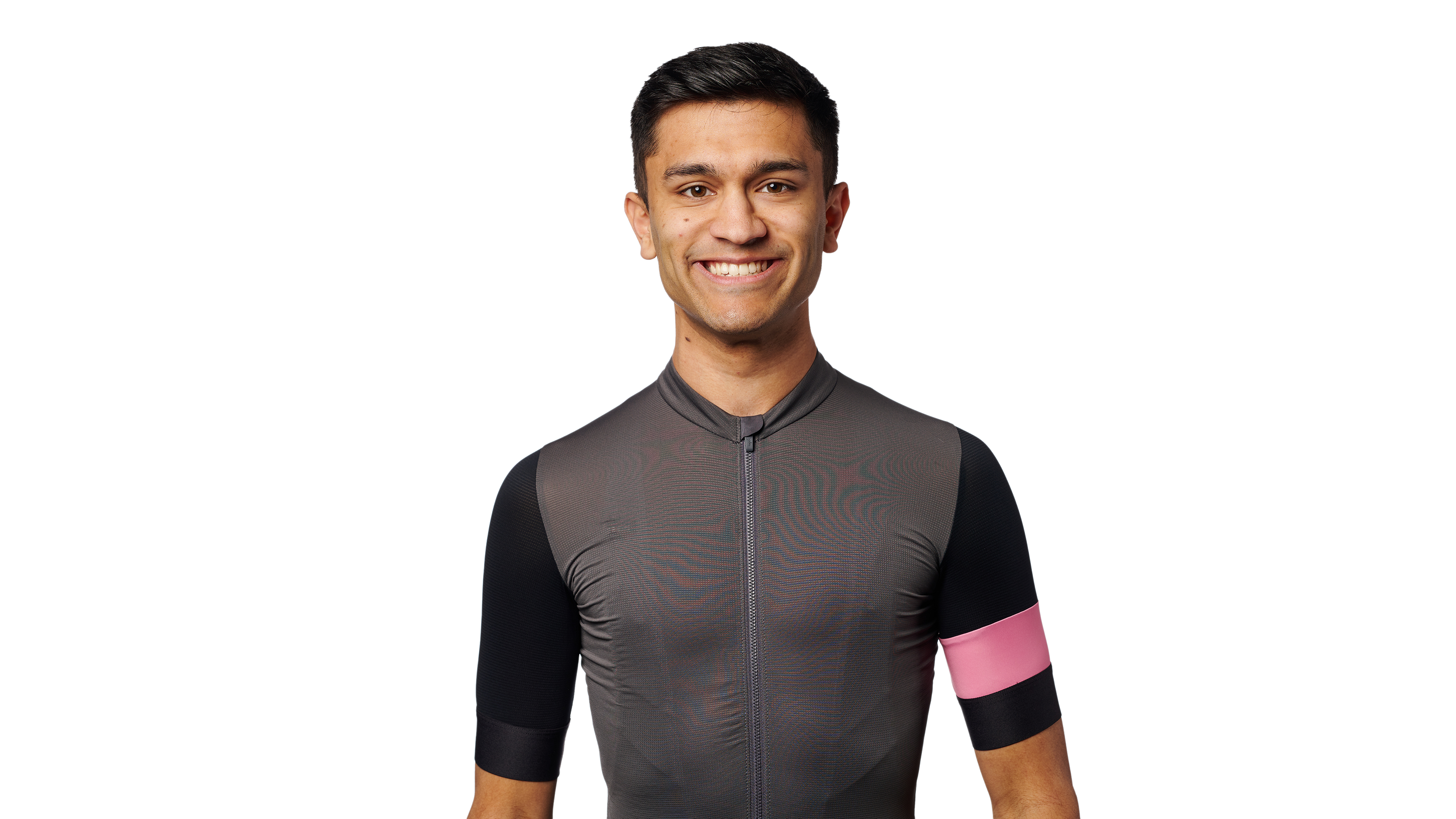
After discovering his love of cycling in college, Sam has always kept two wheels very close. Having spent over five years working in a couple of local bike shops, it's fair to say he enjoys getting hands on. He also loves to push himself to ride ever longer distances and to explore as many new places as possible.
Sam has been Cycling Weekly's video manager since January 2022. You'll find him on our YouTube channel where he brings you the latest cycling tech news, rides, reviews and all of the most important new launches while taking in some incredible cycling adventures too.
- Luke FriendFreelance writer